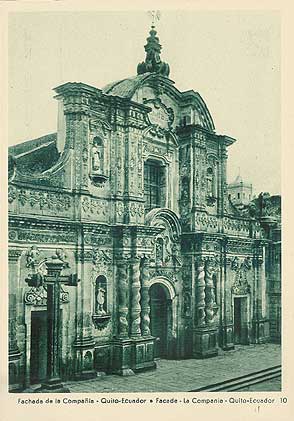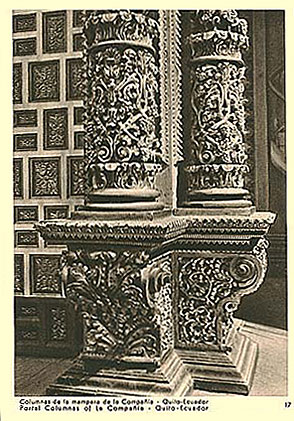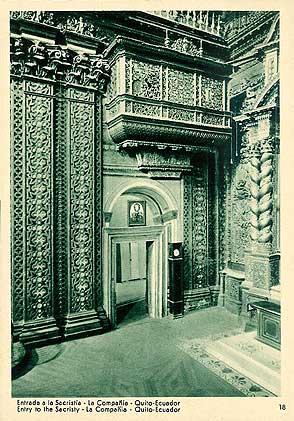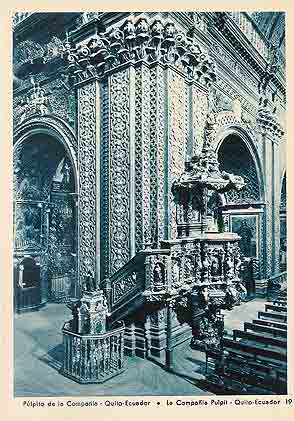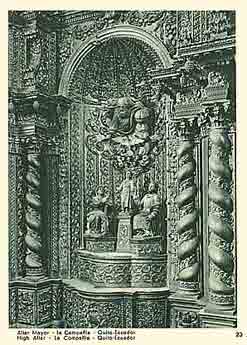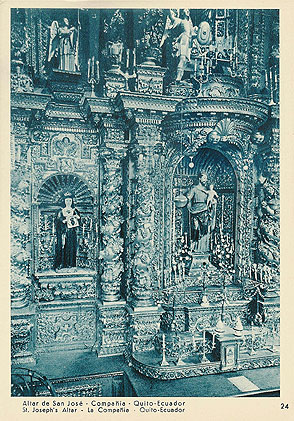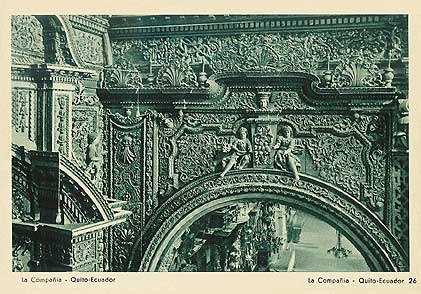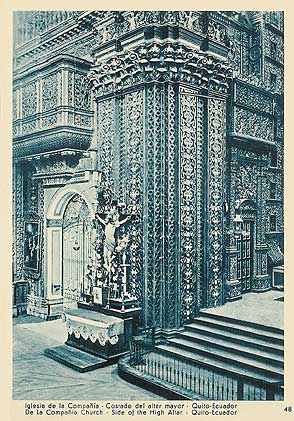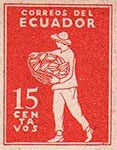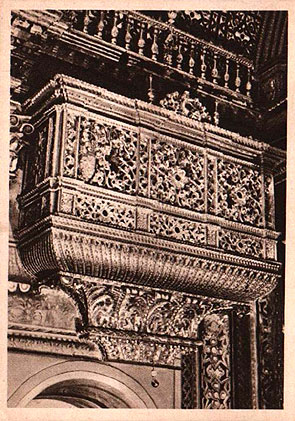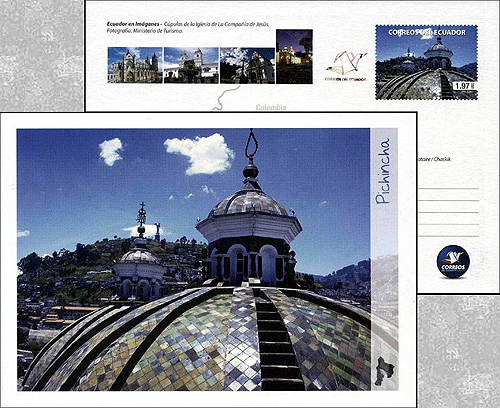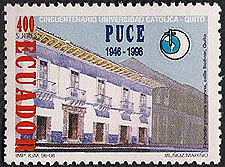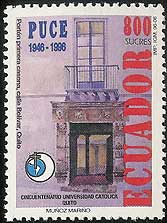Unidad Educativa Borja, Cuenta
ECUADOR, 2012, a souvenir sheet to honor the 75th anniversary of the Jesuit Unidad Educativa Borja, Scott 2083The first Jesuit college in Cuenca was founded in 1638 by Fathers Francisco de Figueroa and Cristóbal de Acuña, who was its first rector. It operated for almost 130 years until 1767 when the Jesuits were expelled from Spanish territories. After the Restoration of the Society the Jesuits returned to Ecuador in 1862, and the college at Cuenca was briefly restored to them from 1869-1876, when political problems again forced their withdrawal. From 1897 on there was a drive to have a Jesuit college in the town, spearheaded by Mrs. Rosa Malo, widow of the illustrious local citizen, Rafael Borja, but the anti-Catholic laws of the time and the lack of Jesuits, prevented this. Finally thanks to the generosity of that lady, the Rafael Borja School was founded in 1937. In 1946 a boarding school was founded and named for St. Francis Borja, third superior general of the Jesuits. At the end of the 70's the Jesuits began the construction of a new complex which opened in 1981 under the rectorship of Fr. Jorge Carrion, SJ, and in this beautiful complex the Escuela San Francisco de Borja and the Colegio Rafael Borja were united to become the Unidad Educativa Borja.
The College of St. Gabriel, Quito
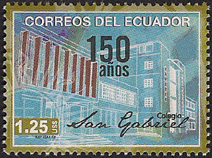
ECUADOR, 2012, a stamp to honor the 150th anniversary of the Jesuits'
return to Ecuador and of the College of St. Gabriel, Scott 2085
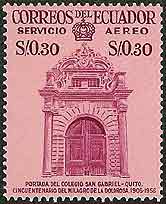
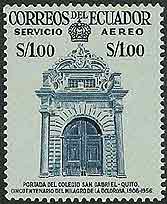
ECUADOR, 1958, the 50th anniversary of the miracle
of Saint Gabriel's College, Scott C321-22
The 19th-century entrance
The College of Saint Gabriel in Quito, founded in 1862, is as famous for its miraculous image of Our Lady of Sorrows as it is for its educational excellence. Two stamps bear the image of the school's old door.
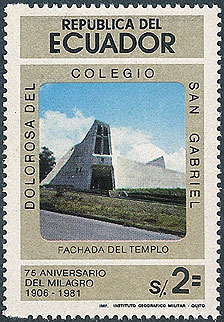
ECUADOR, 1981, the 75th anniversary of the miracle,
Scott 1016
The Saint Gabriel college church
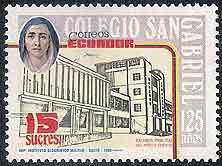
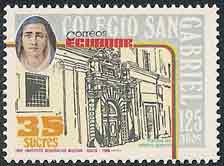
ECUADOR, 1988, the 125th anniversary of the school,
Scott 1171-72
The contemporary facility, the 19th-century entrance, Our Lady of Sorrows.
The official page accompanying the release of these stamps says: "For 125 years this college has tried to fulfill to the best of its ability the important mission of the Society of Jesus in the service of the youth of our country. They have been years, certainly, filled with vicissitudes, triumphs, arduous battles and fearsome defeats. At the outset the institution was constituted as a National College; years later it was deprived forcefully of its laboratories, library, and even its buildings. Strong winds of anticlerical obscurantism were blowing in those days, and San Gabriel College was on the point of disappearing completely. But in 1906 — at the height of the anticlerical period — came the miracle of April 20 . . . From that time on, the history of the College of San Gabriel began to be written with a new start . . ."
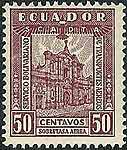
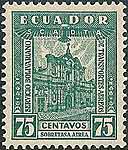
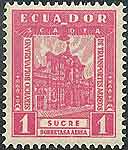
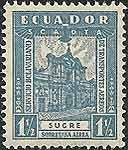
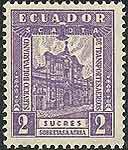
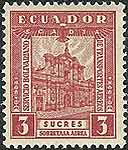
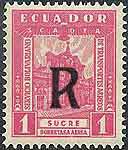
ECUADOR, 1929, Scott C16-21, CF2
The last stamp is overprinted as an air registration stamp
The Jesuit Church (the Iglesia de La Compañía de Jesus, or simply La Compañía) on the Calle Garcia Moreno in Quito was finished in 1765 after being under construction since 1605, and just a few years before the Suppression drove the Jesuits out of South America. A blend of Baroque and Quiteño art, it is one of the most ornate churches in Latin America and has been named part of the Cultural Heritage of Humanity.
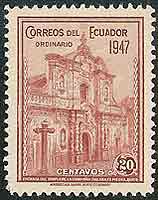
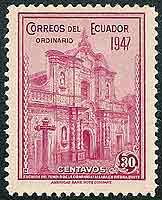
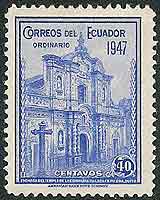
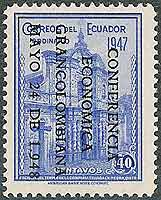
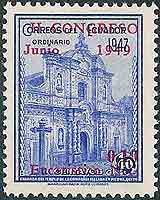
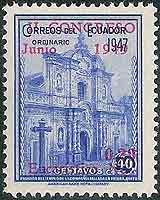
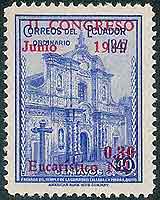
ECUADOR, 1947, Scott 478-480, with overprints
in 1948 and 1949, Scott 489, 525-527
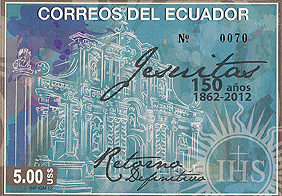
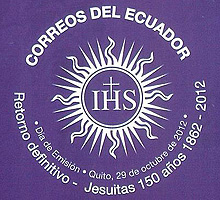
ECUADOR, 2012, a souvenir sheet to honor the 150th anniversary of the
Jesuits' return to Ecuador features the church,and its special FDI cancel,
Scott 2086
The issue also includes three stamps to commemorate the College
of Saint Gabriel in Quito, the Unidad Educativa Borja
in Cuenta, and the Unidad Educativa San Felipe Neri
in Riobamba
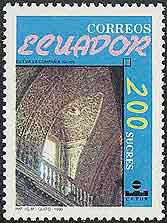
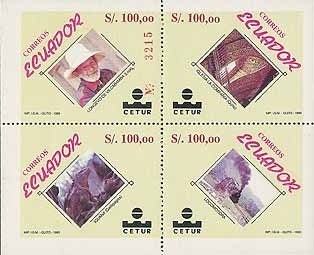
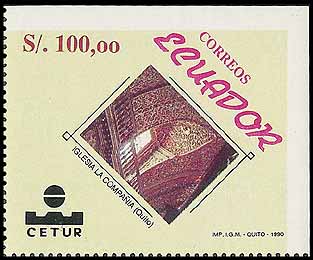
ECUADOR, 1990, Scott 1242, 1244b
Note the highly ornate ceiling of the church on a stamp and souvenir sheet
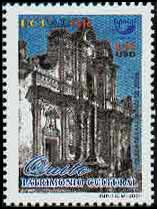
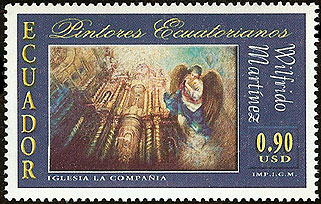
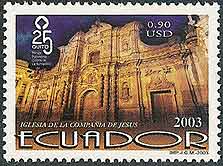
ECUADOR, 2002 dated 2001, Cultural Heritage of
Humanity, Scott 1654b
2002, one of five paintings by Ecuadorian Wilfrido Martínez, Scott
1603d
2003, Cultural Heritage of Humanity, Scott 1689A
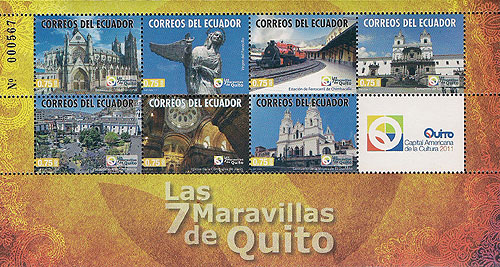
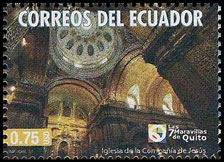
ECUADOR, 2011, Seven Marvels of Quito, American Cultural Capital, Scott
2030,
featuring the church of the Jesuits, Scott 2030f
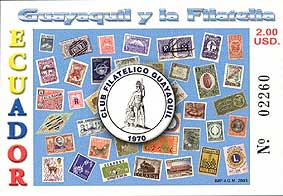
ECUADOR, 2003, The Guayaquil Stamp Club stamp-on-stamp issue, Scott
1682
showing the air registration stamp (Scott CF2) to the left of the club seal.

This 15 centavo stamp (banana palm tree), said to be the smallest on any postal
stationary, is imprinted on the reverse side of the following postal cards.
The cards give some idea of the richness of La Compañía's decor.

